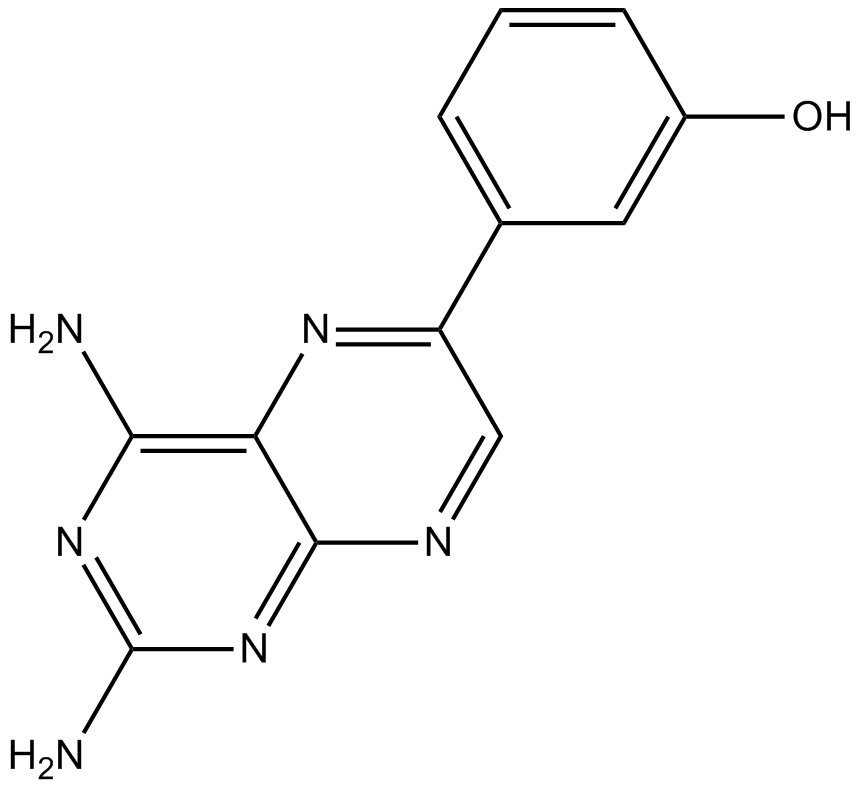TG100713 |
| Catalog No.GC16231 |
TG100713 est un inhibiteur de PI3K, avec des IC50 de 24, 50, 165 et 215 nM pour les isoformes PI3Kδ, γ, α et β respectivement.
Products are for research use only. Not for human use. We do not sell to patients.

Cas No.: 925705-73-3
Sample solution is provided at 25 µL, 10mM.
IC50 (PI3Kγ, PI3Kδ, PI3Kα and PI3Kβ): 50 nM, 24 nM, 165 nM and 215 nM
TG100713 is a pan-PI3K inhibitor against PI3Kγ, PI3Kδ, PI3Kα and PI3Kβ.
PI3Kγ and PI3Kδ are a pair of pro-inflammatory PI3K isoforms that contribute to the inflammation that damages ischemia tissues upon reperfusion. Phosphoinositide 3-kinases (PI3Ks) are benefit to pro-cell survival roles during tissue iscg the reperfusion phhemia. Therefore, it is possible that selectively inhibiting pro-inflammatory PI3K isoforms durinase could ultimately control overall tissue damage caused by ischemia/reperfusion injuries such as myocardial infarction.
In vitro: Modeling studies suggested that the freedom of conformational rotation permitted by ring substituents controls isoform selectivity. Although substituent ring of TG100-115, TG100713, and TG101110 all require energy minima at 30–40°, angles diverge of each compound results in paying differing penalties from this range. TG100-115 displays the greatest barrier to rotation and finally is the most isoform selective, TG100713 has the most conformational flexibility (ring A being almost freely rotatable with maxima ≈5 kcal; 1 kcal = 4.18 kJ), suggesting the least selective, and TG101110 lies an intermediate position (several conformations ≦10 but some >>50 kcal) [1].
In vivo: The minimum structure which satisfies all three requirements is shown in TG100713, which so far has also displayed the best PI3K binding activity. Interestingly, the SAR profiles generating correlate quite well with the results of the initial in vivo screen further supports the involvement of PI3K as a target for inhibiting vascular permeability in related compounds [2].
Clinical trial: So far, no clinical study has been conducted.
References:
[1] Doukas J, Wrasidlo W, Noronha G, Dneprovskaia E, Fine R, Weis S, Hood J, Demaria A, Soll R, Cheresh D. Phosphoinositide 3-kinase gamma/delta inhibition limits infarct size after myocardial ischemia/reperfusion injury. Proc Natl Acad Sci U S A. 2006 Dec 26; 103(52):19866-71.
[2] Palanki MS, Dneprovskaia E, Doukas J, Fine RM, Hood J, Kang X, Lohse D, Martin M, Noronha G, Soll RM, Wrasidlo W, Yee S, Zhu H. Discovery of 3,3'-(2,4-diaminopteridine-6,7-diyl)diphenol as an isozyme-selective inhibitor of PI3K for the treatment of ischemia reperfusion injury associated with myocardial infarction. J Med Chem. 2007 Sep 6;50(18):4279-94. Epub 2007 Aug 9.
Average Rating: 5 (Based on Reviews and 1 reference(s) in Google Scholar.)
GLPBIO products are for RESEARCH USE ONLY. Please make sure your review or question is research based.
Required fields are marked with *




















